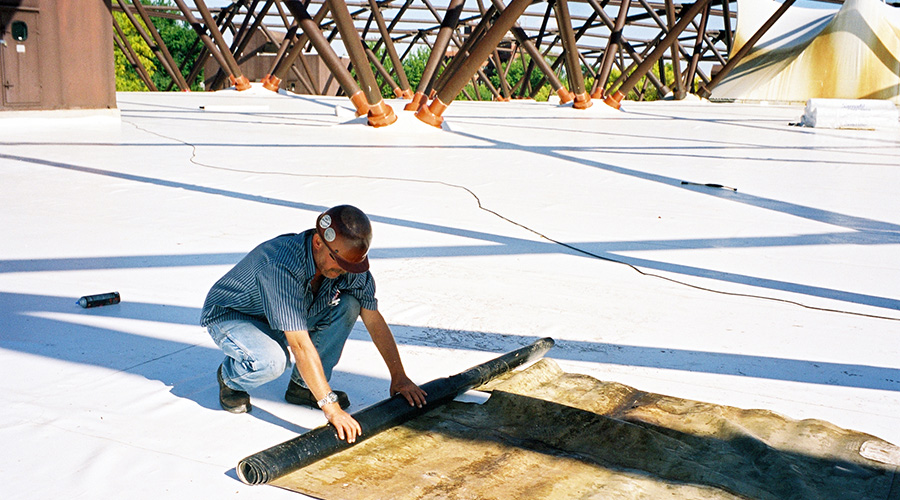Be Aware of Specification, Application Errors
Errors in specifying roof coatings can occur by the manager or a manufacturer's representative. Coatings must be matched to the selected substrate, so it is important to properly identify the existing roofing materials because the manufacturer will base the grade selection and even the color range and required dry-film thickness (DFT) on these materials.
One example is a white single-ply roof. Is it a thermoplastic polyolefin (TPO), a polyvinyl chloride (PVC), or maybe a Hypalon? Asphalt surfaces provide a similar challenge. Is it an old built-up roof or a new atactic polypropylene (APP) system? All of these roofing materials have a reliable coating solution, but each brings different and specific challenges.
When the roof material is unknown, the manufacturer might suggest a coating that works on many surfaces. In these situations, a test area is prudent. Coatings might look the same, but they can act very differently.
Application Issues
Generally, the most diagnosable application error for roof coatings results from spreading a coating too thinly. It is important to understand that average DFT does not mean much. The thinnest areas matter. Applicators should use two or more coats to produce the most consistent film that is free from voids and pinholes.
Spray application produces a smoother and often more uniform finish. Application with a roller is occasionally needed, but to achieve a final film thickness, the typical ratio is three roll coats to one spray coat. Detailing and surface preparation are critical, and it is best to view a roof in two stages: the roofing/detailing stage and the coating/painting stage.
Applicators also should use primers, mastics, fabric or tapes on seams, transitions, and protrusion because these areas receive the most stress as a roof moves and ages. Final coating application over the field of the roof simply provides a redundant layer of protection for important underlying details.
Film Thickness
When applying roof coatings, it is good practice to monitor the coating's thickness, both wet and dry, during the application because restaging the project can be time-consuming and costly. Workers need to confirm the amount of material needed to achieve the required DFT in the project specification over the given surface area. They also must allow for coating loss during installation from both overspray and surface profile. They can use a wet-film-thickness gauge over a metal plate or other flat surface to achieve an accurate measurement.
They should avoid regulating thickness simply based on a coating's ability to hide because the latest generation of bright white coatings is deceptively efficient. Regardless of color, workers should measure the application thickness frequently using the appropriate instruments during and after installation.
Roof coatings are formulated and engineered materials that employ an array of additives, solvents, polymer alloys, and pigments. As a result, a measure of brand loyalty is prudent, and managers should consider substitution very carefully.
Coatings often are the only site-manufactured components of a roofing system and therefore might demand greater attention to detail. But in return, they offer managers a huge opportunity to solve problems, save energy in existing buildings, and provide for more cost-effective and sustainable roofing.
Steven Heinje is the technical service manager for Quest Construction Products in Phoenix. For most of his 29 years as a coatings scientist, he led the research and development lab in Spokane, Wash. He is the vice president and a member of the RCMA's board of directors, and he contributes extensively to ASTM D08 and is active in RRCI, ASQ, ACS, and FSCT/NPCA.
Related Topics:














